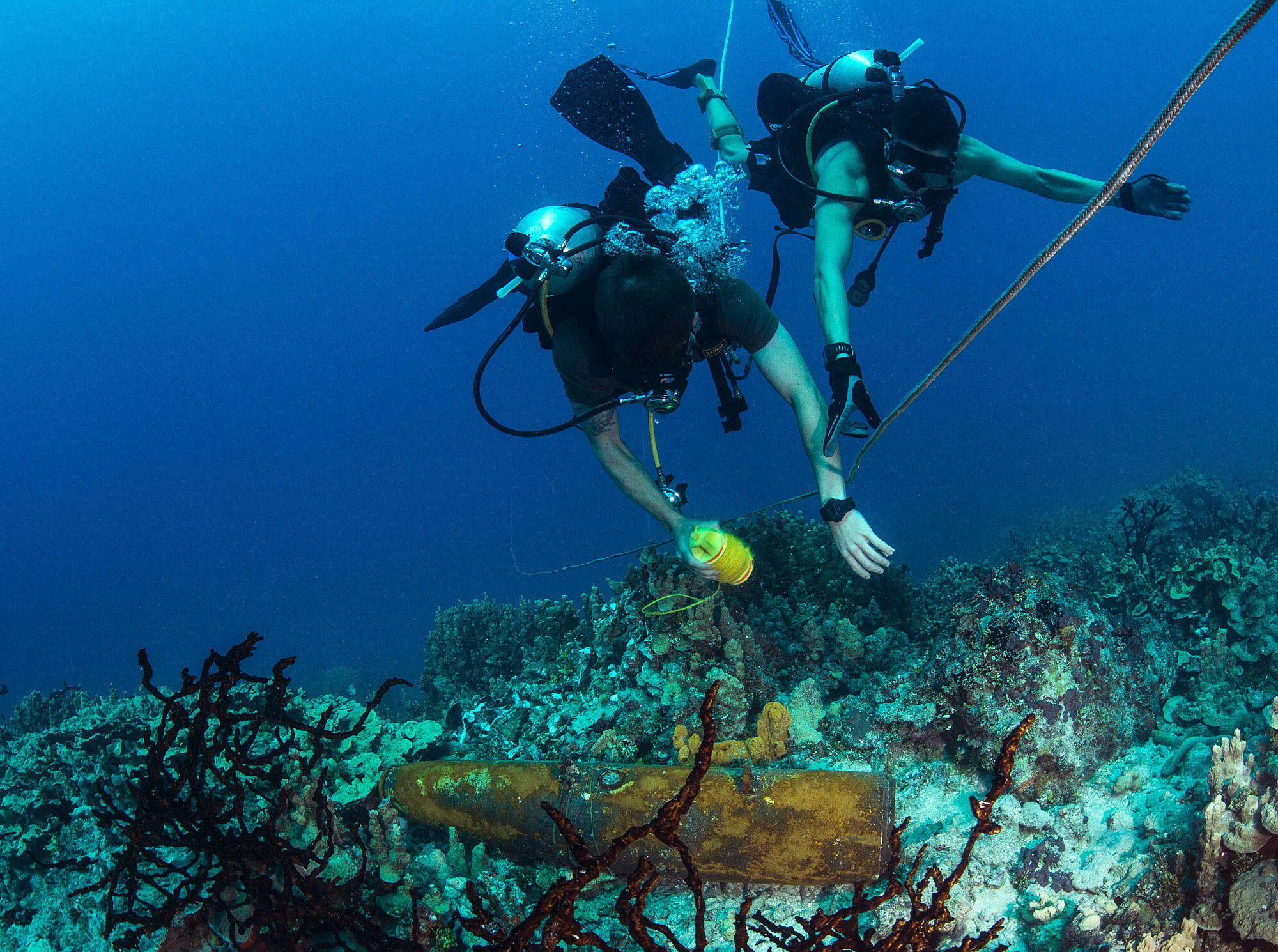

On July 22, the US Navy announced that for the first time an uncrewed robot ship and payload were ready for deployment. The “Unmanned Influence Sweep System” (UISS) is a tool for destroying sea mines, which are floating explosives designed to sink ships. By using robots for this work, the Navy could preserve the lives of sailors, and make ocean passageways safe for military and commercial vessels alike.
As designed, the UISS can be operated from a dedicated control ship, such as the Navy’s Littoral Combat Ship, or a “vessel of opportunity,” which is a catch-all term for other ships on hand capable of using it. The Littoral Combat ship is a long-troubled class of warship. Its promise, when it was first planned in 2004, was that it could operate in shallower waters than the rest of the Navy’s deep-sea vessels. One of these crucial missions is minesweeping. As a February report from the Government Accountability Office argued, “costs to construct the ships have more than doubled from initial expectations, and promised levels of capability have been unfulfilled.”
Congressional action is likely to keep some of the Littoral Combat Ships in service despite Navy efforts to decommission them. Because the UISS is a minesweeping capability specifically designed to work with Littoral Combat Ships, a declaration that the ships can perform more of their expected role could go a great distance to keep the ships in service.
Regardless of whether or not the Navy keeps its Littoral Combat Systems, the UISS is adaptable enough to operate out of a range of vessels, making minesweeping possible regardless of what other capabilities the Navy has on hand.
The UISS is a system, in this case one that combines an uncrewed vessel, a set of sensors, communications and control equipment, and a mine detecting-and-detonating tool. As declared by the Navy in its announcement, the UISS “provides acoustic and magnetic minesweeping coupled with the semi-autonomous, diesel-powered, aluminum-hulled Mine Countermeasures Unmanned Surface Vehicle.”

The earliest sea mines were set off of direct collision with a ship, but a range of triggers exist designed to ensure the mines threaten large ocean-going vessels while being difficult for minesweepers to find and defuse. In November 2020, the UISS completed tests of detection and detonation against simulated mines. In January 2022, the system underwent an “underwater shock” test, where the Navy tested how well it withstood repeated explosions.
Naval mines could be a hazard in any future war that involves the US Navy. They are also a live problem on the Black Sea, where naval mines have for months drifted into the territorial waters of Romania, Bulgaria, and Turkey. These mines, deployed by either Russia or Ukraine or possibly both countries, offer brief tactical advantage, blocking safe passage into and out of ports. But when they get caught in the current or become loose from their mooring, they change from a fixed hazard near an expected war to an ambient danger, one that can threaten all sea-going vessels nearby.
Defusing mines can be done by teams of skilled human divers. The stakes are high, and the conditions are rough. Using robots instead to defuse mines, or detonating them if need be, can free up time and risk fewer lives in the process. It’s partly why forces like the Royal Navy have also invested in autonomous minesweeping as a way to protect ships and shipping lanes without loss of life.
Bringing minesweeping into the Navy through autonomous boats is also one way to emphasize how a combined human-robotic fleet might work in the future.
“Notably, this is also the first [Initial Operating Capability] of an unmanned surface platform by the U.S. Navy, marking an important milestone in the evolution toward a hybrid fleet of manned and unmanned systems,” read the Navy’s announcement on UISS.
Last month, the Navy announced plans for a 500-ship fleet by 2045. To reach that goal, the Navy expects to have 150 uncrewed vessels, operating alongside and in conjunction with 350 crewed vessels. The officers and enlisted sailors who learn how to work alongside an uncrewed platform, like the UISS, on minesweeping missions may go on to command or manage fleets where uncrewed vessels won’t just be a tool used by the ship, but the ships themselves. If robots are to serve a useful purpose in future naval war, then having those robots tackle the time-intensive and dangerous work of clearing seaborne explosives is a great place to start.
